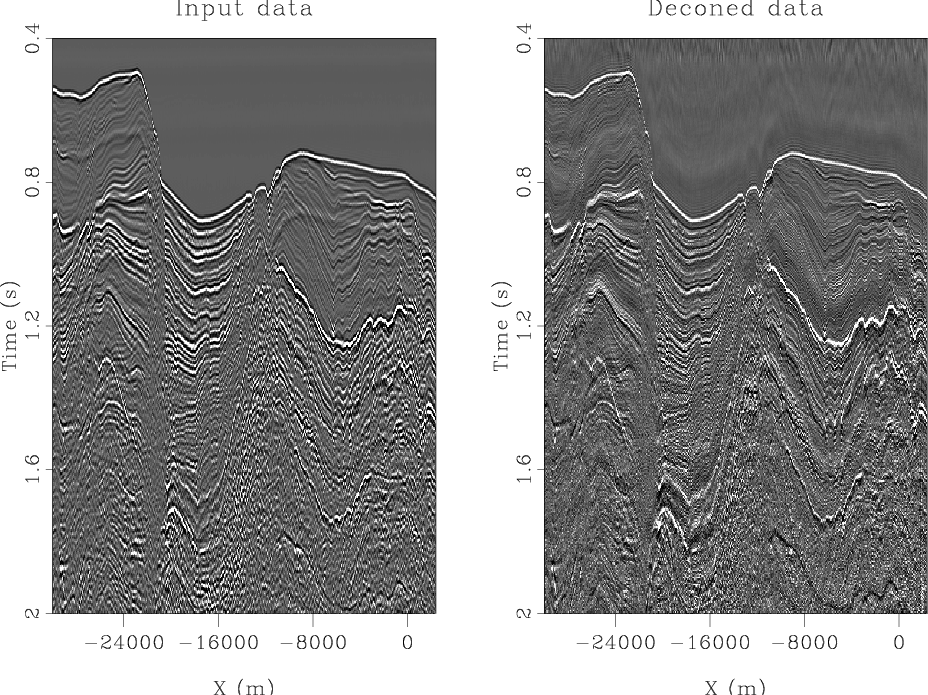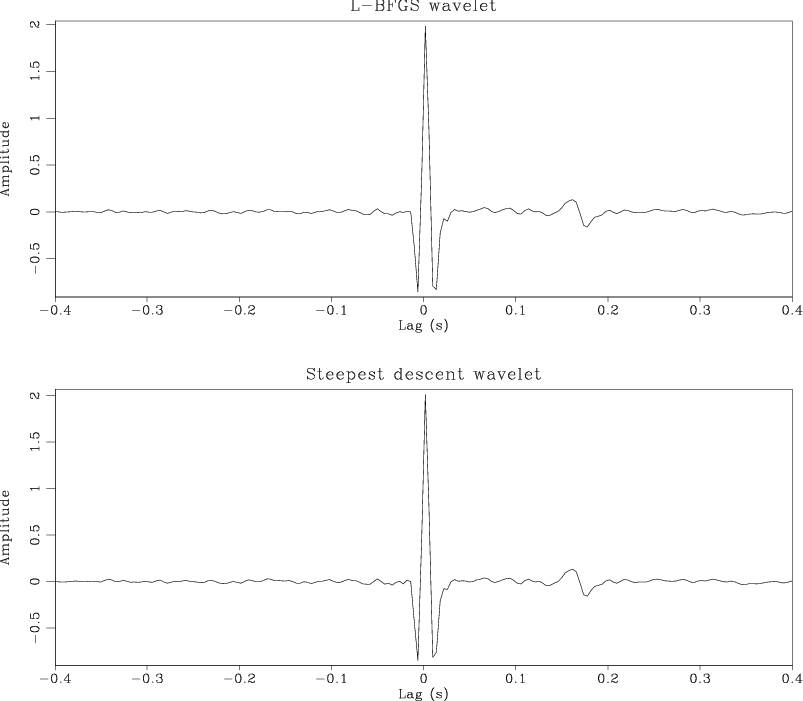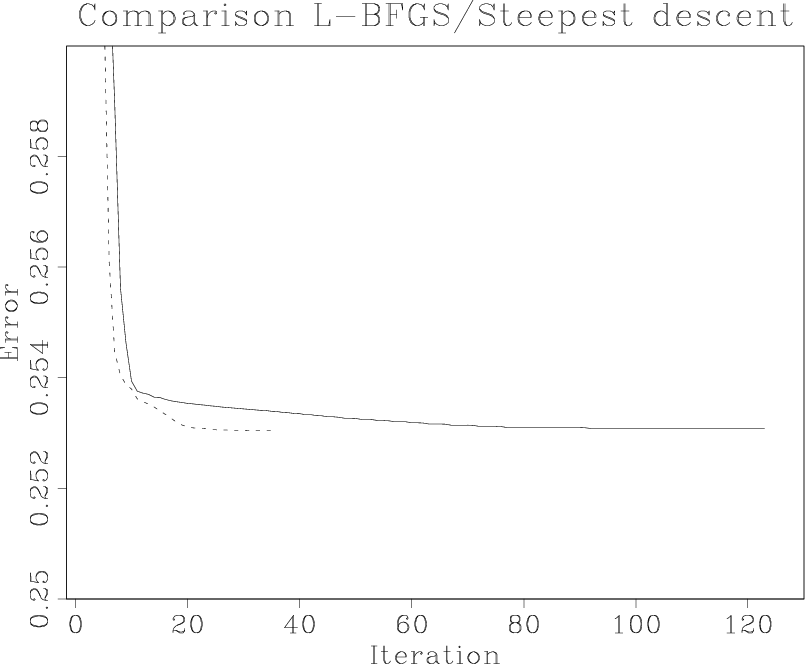|
|
|
|
Fast log-decon with a quasi-Newton solver |
In terms of convergence speed, it takes 35 iterations and 1.7 seconds for the L-BFGS technique to reach a minimum, and 123 iterations and 24 seconds for the steepest-descent algorithm (Figure 3). Ignoring the time it takes to read and write data on disk, each iteration of the L-BFGS algorithm is about five times faster, with almost four times less iterations. Clearly, this difference is not solely due to the better convergence properties of the quasi-Newton algorithm over the steepest-descent method. As mentioned before, different line-search strategies and stopping criteria matter as well.

|
|---|
|
Comp-cabo
Figure 1. Left: input data. Right: deconed data with the L-BFGS solver |
|
|

|
|---|
|
Comp-wvlt
Figure 2. Top: wavelet estimated with the L-BFGS method. Bottom: wavelet estimated with the steepest-descent method. |
|
|
|
Comp-fct
Figure 3. Convergence comparison between the steepest descent (solid) and L-BFGS (dash) methods. Note the narrow horizontal scale to highlight small differences close to the convergence point. |

|
|---|---|
|
|
|
|
|
|
Fast log-decon with a quasi-Newton solver |